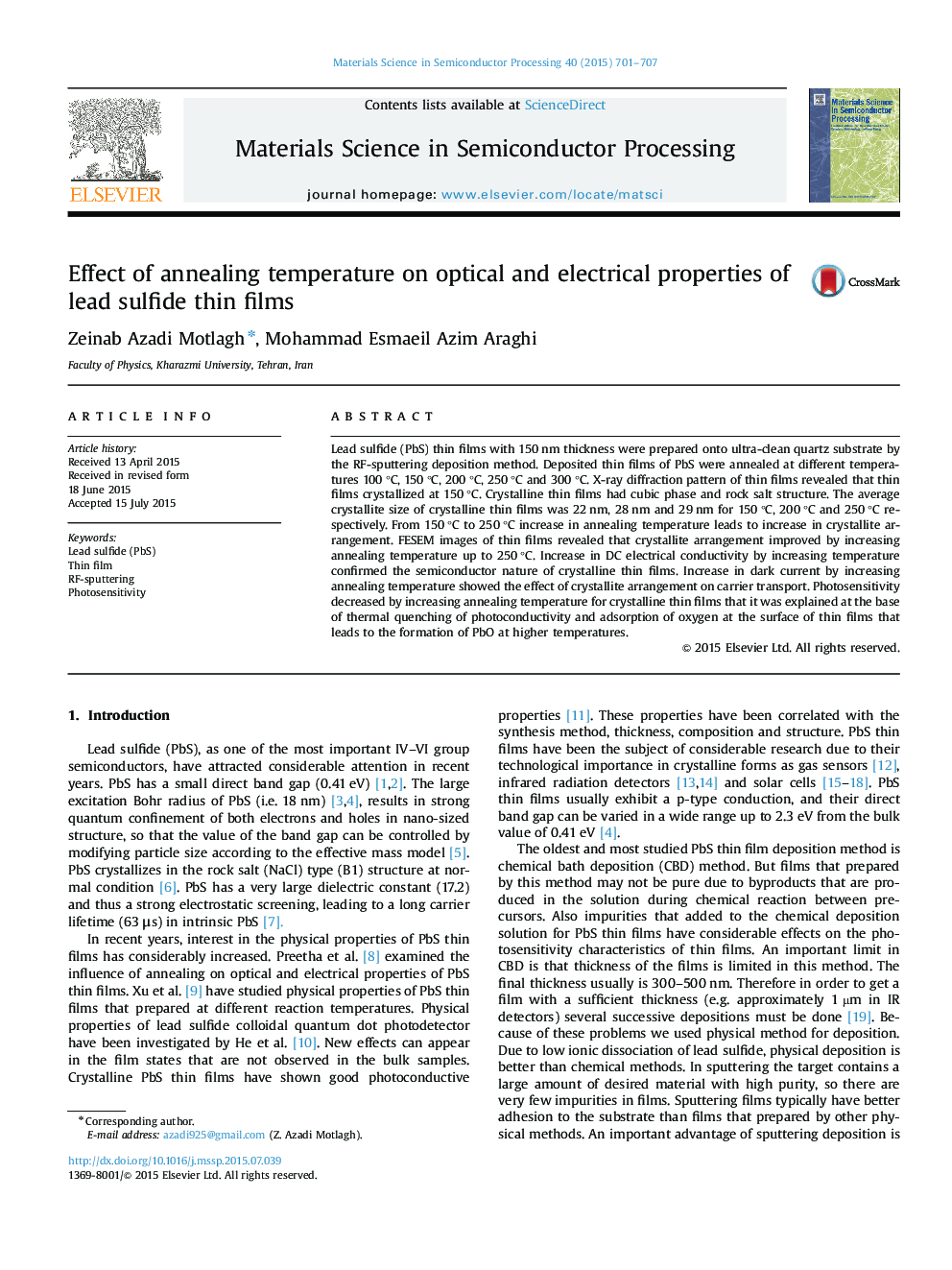| Article ID | Journal | Published Year | Pages | File Type |
|---|---|---|---|---|
| 7119260 | Materials Science in Semiconductor Processing | 2015 | 7 Pages |
Abstract
Lead sulfide (PbS) thin films with 150 nm thickness were prepared onto ultra-clean quartz substrate by the RF-sputtering deposition method. Deposited thin films of PbS were annealed at different temperatures 100 °C, 150 °C, 200 °C, 250 °C and 300 °C. X-ray diffraction pattern of thin films revealed that thin films crystallized at 150 °C. Crystalline thin films had cubic phase and rock salt structure. The average crystallite size of crystalline thin films was 22 nm, 28 nm and 29 nm for 150 °C, 200 °C and 250 °C respectively. From 150 °C to 250 °C increase in annealing temperature leads to increase in crystallite arrangement. FESEM images of thin films revealed that crystallite arrangement improved by increasing annealing temperature up to 250 °C. Increase in DC electrical conductivity by increasing temperature confirmed the semiconductor nature of crystalline thin films. Increase in dark current by increasing annealing temperature showed the effect of crystallite arrangement on carrier transport. Photosensitivity decreased by increasing annealing temperature for crystalline thin films that it was explained at the base of thermal quenching of photoconductivity and adsorption of oxygen at the surface of thin films that leads to the formation of PbO at higher temperatures.
Related Topics
Physical Sciences and Engineering
Engineering
Electrical and Electronic Engineering
Authors
Zeinab Azadi Motlagh, Mohammad Esmaeil Azim Araghi,
